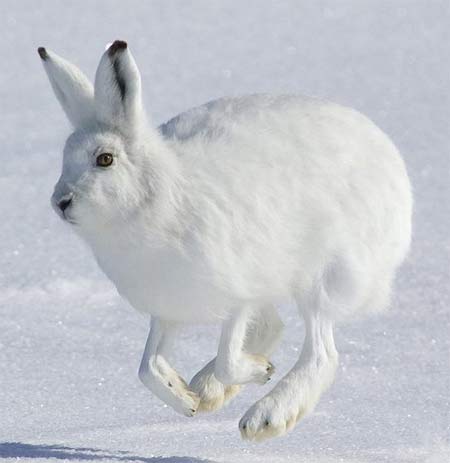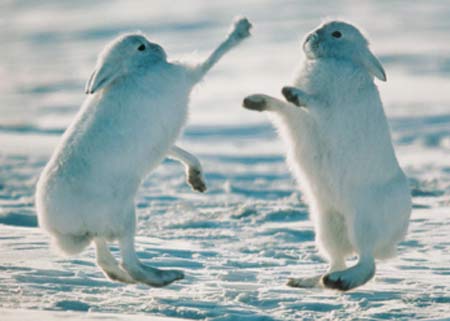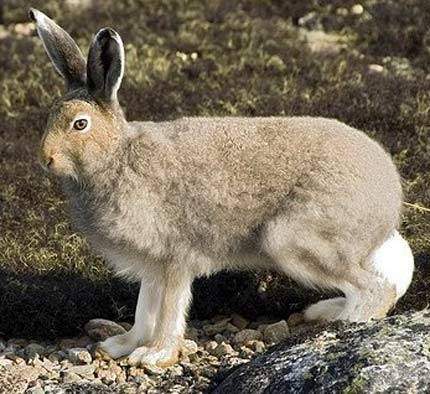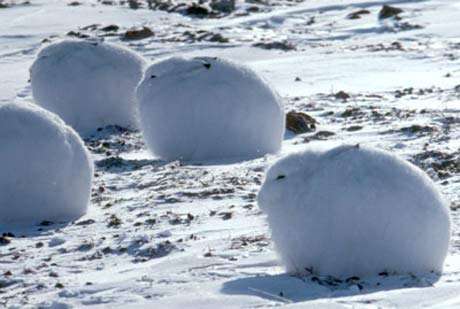Arctic Hare – White by Winter, Gray-Brown in Summer

With a range that covers the tundra regions of Greenland and northern Canada, the arctic hare (also called the polar rabbit) is a species of hare that has adapted to polar and mountainous regions. They’ve adapted by turning white during the winter to blend in with the snow, while turning gray-brown in the summer to blend with mud and rocks. They keep the black tips on their ears year-round. They also dig holes in the ground under the snow in order to keep warm while they sleep. The common Arctic hare is 22 to 28 inches (55 to 70 centimeters) long and weighs 9 to 12 pounds (4 to 5.5 kilograms).

Arctic hares closely resemble rabbits, but have longer ears and the ability to stand up taller; they also can travel in large groups and huddle for warmth like rabbits, but tend not to. They survive mainly off woody plants, but also eat buds, berries, leaves, grasses, purple saxifrage, and occasionally meat. When they’re eating plants, they will search where there’s less snow.

In regards to reproduction, Arctic hares can have up to eight babies at once. These babies are called leveret, and will not leave their mother until they are fully equipped to survive on their own and avoid the attacks of Arctic wolves, Arctic foxes and ermine. They are also known for their ability to run up to 40 miles (64 kilometers) per hour.

